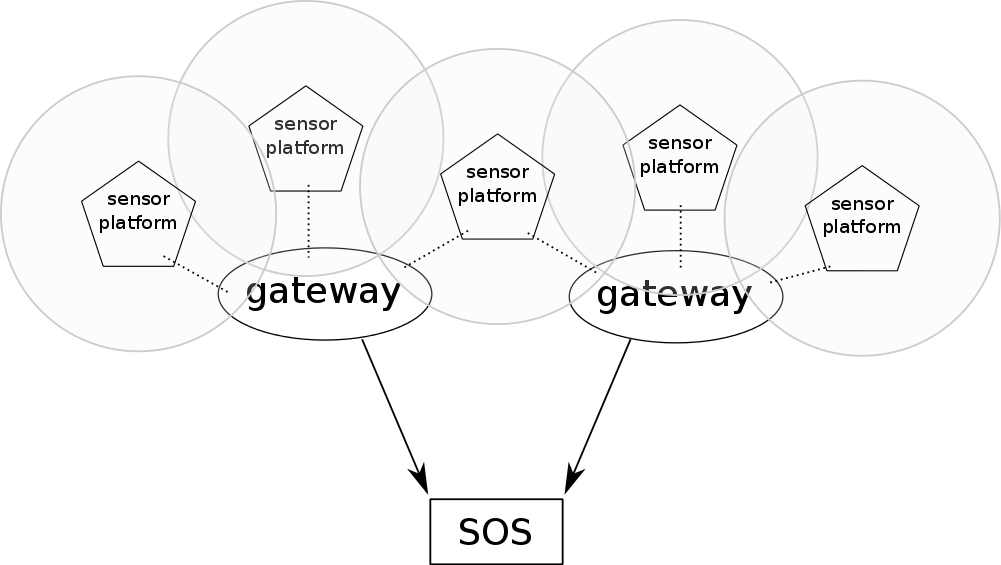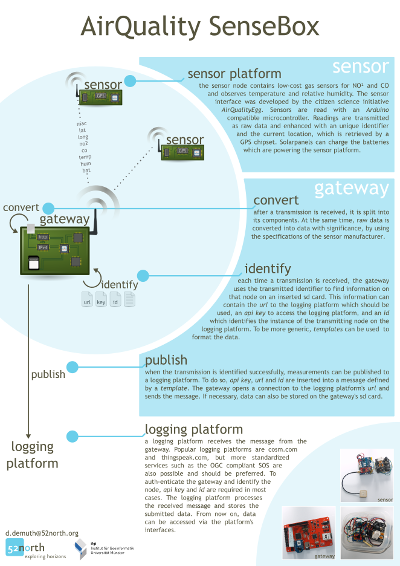We have been invited to present our experiences with the AirQuality SenseBox at EGU 2013, Vienna. If you are at EGU and interested, feel free to join session GI3.5 in room G1 this afternoon from 15:30 to 17:00.
Meet the AirQuality SenseBox at AirMonTech
We will appear at AirMonTech Workshop / Conference in Duisburg [GER] from March 04 to March 06 and present our AirQuality SenseBox project. Check out our poster below…
Making Use of Low-Cost Air Quality Sensors
Last year the sensemake.rs community started their AirQuality Monitoring and Sensing project on kickstarter. In september the Institute for GeoInformatics (IfGI) and 52°North held a workshop together with the designers of the platform to discuss further use and evolution of this project (see post). We had the great luck to receive 20 beta devices of the AirQuality Egg.
In the last months, we tried to convert the existing approach of “balcony-mounted” devices to a more autonomous solution. Instead of the nanode-rf we connected an RFBee Wireless device (based upon an ATMEGA 168) to the SensorShield. Like the nanode, the RFBee has an Arduino bootloader and can be programmed to fit your needs. The solution we propose is equipped with a GPS receiver to provide a location; a LiPo battery and a solarpanel provide power to the sensor-platform. By adding these components, the AirQuality Egg turns into a sophisticated Wireless Sensor Platform. Data are sent to gateways which forward it into a Sensor Observation Service (SOS).

RESTful GeoServices SenseBox – first beta released
The first beta for the 52°North RESTful GeoServices SenseBox can be downloaded from the SVN. This beta is the continuation of the Google Summer of Code Project “GIS link to the Web of Things“. The GeoServices SenseBox implements the Feature Service of the OGC GeoServices REST API draft in version 0.0.4 on an “open-hardware” microcontroller plattform.
The platform is capable of reading sensors and storing their measurements, as well as providing a simple web server. A RESTful interface provides easy access to the measurements and delivers them as features. When a feature or layer is queried, the platform responds with a JSON object containing that feature or layer.
